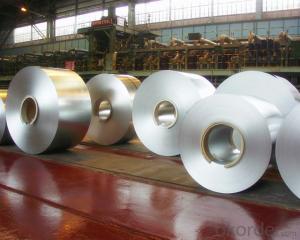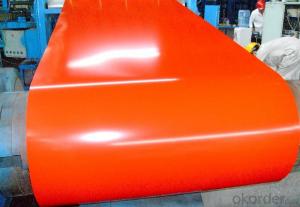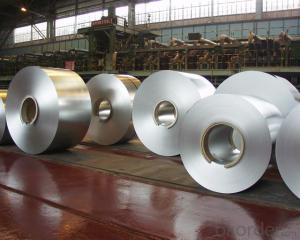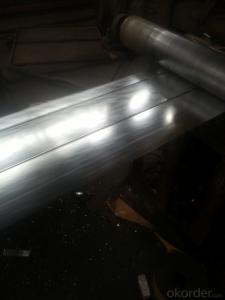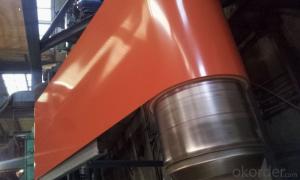GI/CGI/SGCC Galvanized Steel Sheet In Coil
- Loading Port:
- Qingdao
- Payment Terms:
- TT OR LC
- Min Order Qty:
- 25 m.t.
- Supply Capability:
- 10000 m.t./month
OKorder Service Pledge
OKorder Financial Service
You Might Also Like
GI/CGI/SGCC Galvanized Steel Sheet In Coil
1.Structure of GI/CGI/SGCC Galvanized Steel Sheet In Coil
GI/CGI/SGCC Galvanized Steel Sheet In Coil is widely used in the construction industry, as raw material for the production of corrugated panels, fencing products, drywall panel profiles, ventilation systems etc. Recommended for both outside and inside usage, galvanized steel has a high resistance to corrosion in different environments, due to a protective layer of zinc of 100 – 180 grams per square metre.
Hot-dip galvanized steel coils are produced by immersing steel in a zinc bath. An appropriate galvanizing process requires a pretreatment process during which the steel passes through different baths which prepare the surface for zinc coating. In this stage, chemicals are used to clean the surface of the steel. After the chemical treatment, the steel coils pass through a bath of melted zinc at temperatures around 460 ° C. The resulting uniform coating is finished through a process of skin-passing to provide smooth and shiny appearance of the finished product. To store for a longer period, the hot-dip galvanized coils can be delivered with a final oil coating, according to the customer’s demand.
2.Main Features of GI/CGI/SGCC Galvanized Steel Sheet In Coil.
1) Rust-proof
2) Water-proof
3)Durable using
3. GI/CGI/SGCC Galvanized Steel Sheet In Coil Images

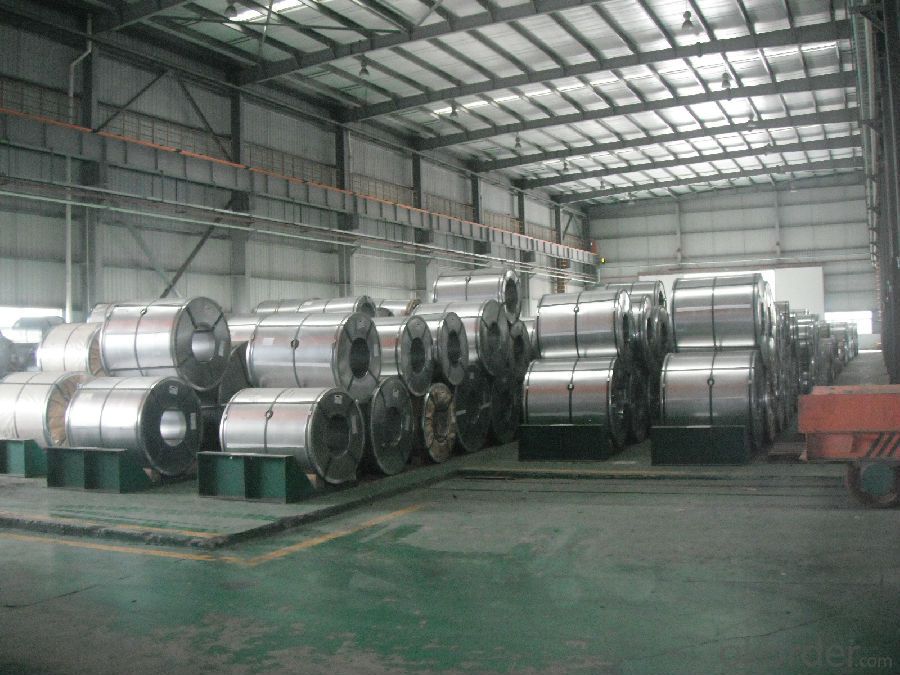
4. GI/CGI/SGCC Galvanized Steel Sheet In Coil Specification
1)Based raw material: Hot rolled steel coils or Cold rolled steel coils
2) Thickness
3) Width
4)Coating mass
5) Spangle
6)Surface treatment
7)Coil inner diameter
8)Painting kind
9)Painting color
10)Painting thickness
5.FAQ of GI/CGI/SGCC Galvanized Steel Sheet In Coil
We have organized several common questions for our clients,may help you sincerely:
①How about your company?
A world class manufacturer & supplier of castings forging in carbon steel and alloy steel,is one of the large-scale professional investment casting production bases in China,consisting of both casting foundry forging and machining factory. Annually more than 8000 tons Precision casting and forging parts are exported to markets in Europe,America and Japan. OEM casting and forging service available according to customer’s requirements.
②How to guarantee the quality of the products?
We have established the international advanced quality management system,every link from raw material to final product we have strict quality test;We resolutely put an end to unqualified products flowing into the market. At the same time, we will provide necessary follow-up service assurance.
③Could I have your Processing technique introduction?
Processing technique:
| adopt wide hot galvanized strip produced by famous company as Bao Steel which has even thickness |
| we introduce a new complete set of cutting technology |
| keep steady precision |
| reduce waste of material farthest |
| adopt physical technique in order to make the galvanized level thicker |
| enhance the rustproof capability |
| adopt non-chrome passivation technique |
| protect the environment against pollution |
| adopt level pressure technique and inert gases protect technique |
| make the galvanized level brighter |
| delay oxidation phenomenon in natural environment |
- Q:What are the different welding techniques used for steel strips?
- There are several different welding techniques that can be used for steel strips, depending on the specific application and desired results. 1. Arc Welding: This is a common method used for steel strip welding, where an electric arc is created between an electrode and the workpiece. This process can be further categorized into different types such as shielded metal arc welding (SMAW), gas metal arc welding (GMAW), and gas tungsten arc welding (GTAW). Arc welding provides a strong and durable bond between steel strips. 2. Resistance Spot Welding: This technique involves applying pressure and heat to the steel strips at specific points using electrodes. The electric current passes through the strips, causing them to fuse together. Resistance spot welding is often used in automotive and manufacturing industries due to its speed and efficiency. 3. Laser Welding: Utilizing a high-powered laser beam, this technique melts and fuses the steel strips together. Laser welding offers precise control and minimal heat input, making it suitable for thin steel strips or applications that require high precision. 4. Electron Beam Welding: Similar to laser welding, electron beam welding uses a focused beam of electrons to melt and join the steel strips. This technique is particularly effective for welding thin strips or materials with high melting points. 5. Friction Stir Welding: This innovative technique involves a rotating tool that generates friction and heat between the steel strips, effectively joining them together. Friction stir welding is commonly used for aluminum and other non-ferrous metals but can also be adapted for steel strips. Each welding technique has its own advantages and limitations, and the choice depends on factors such as the thickness of the steel strips, desired strength, joint configuration, and production requirements. It is important to consider these factors and consult with welding experts to determine the most suitable technique for specific steel strip welding applications.
- Q:How are steel strips measured and sized?
- Steel strips are measured and sized using various methods depending on the specific requirements and industry standards. Common methods include measuring the width, thickness, and length of the steel strip using specialized tools such as calipers, micrometers, or laser measuring devices. The dimensions are typically recorded in millimeters or inches, and the accuracy of the measurement is crucial for ensuring the appropriate sizing and fit for different applications. Additionally, steel strips may also be classified based on their gauge, which refers to the thickness of the strip. Overall, precise measurement techniques are employed to ensure the steel strips meet the desired specifications and quality standards.
- Q:How are steel strips used in the production of surgical implants?
- Steel strips are used in the production of surgical implants as they provide the necessary strength and durability required in these medical devices. The strips are often shaped and formed into specific designs and sizes to create components like plates, screws, and rods, which are used to stabilize and support bones during surgical procedures. Additionally, steel strips are also utilized in the manufacturing of surgical instruments and tools that are necessary for implantation and other surgical interventions.
- Q:How do steel strips resist wear and tear?
- Steel strips resist wear and tear due to their high strength and hardness. The composition and processing of steel strips make them highly resistant to abrasion, impact, and deformation, ensuring they can withstand heavy usage and harsh environments without significant damage.
- Q:Are steel strips suitable for the production of hand tools?
- Yes, steel strips are suitable for the production of hand tools. Due to their high strength, durability, and resistance to wear and tear, steel strips are commonly used in the manufacturing of various hand tools. The material provides the necessary rigidity and structural integrity required for hand tools to withstand heavy usage and perform effectively. Additionally, steel strips can be easily shaped, heat-treated, and tempered to enhance their hardness and functionality, making them an ideal choice for hand tool production.
- Q:How do steel strips perform in terms of impact resistance?
- Steel strips generally have high impact resistance due to their inherent strength and toughness. The combination of their material properties, such as high tensile strength and durability, allows steel strips to withstand and absorb impacts without significant deformation or damage. This makes them suitable for various applications where impact resistance is crucial, such as automotive parts, construction materials, and industrial equipment.
- Q:What are the factors that affect the thermal conductivity of steel strips?
- There are several factors that can affect the thermal conductivity of steel strips. 1. Composition: The chemical composition of the steel strip plays a significant role in determining its thermal conductivity. Different types of steel alloys have different thermal conductivities. For example, carbon steel generally has lower thermal conductivity compared to stainless steel. 2. Temperature: The thermal conductivity of steel strips can vary with temperature. In general, the thermal conductivity of metals tends to decrease as the temperature increases. However, this relationship can be influenced by other factors such as alloy composition and impurities. 3. Microstructure: The microstructure of the steel strip, including the arrangement of atoms and crystal defects, can impact its thermal conductivity. For instance, a more uniform and compact microstructure is likely to have higher thermal conductivity compared to a microstructure with impurities or defects. 4. Grain size: The grain size of the steel strip can affect its thermal conductivity. Finer grain sizes tend to enhance thermal conductivity, as they provide a more continuous path for heat transfer throughout the material. 5. Impurities: The presence of impurities, such as sulfur or phosphorus, can reduce the thermal conductivity of steel strips. These impurities can act as barriers to heat transfer, hindering the flow of thermal energy through the material. 6. Surface finish: The surface finish of the steel strip can impact its thermal conductivity. A smooth surface finish allows for better contact and heat transfer between the strip and other objects it comes into contact with, resulting in higher thermal conductivity. 7. Thickness: The thickness of the steel strip can also affect its thermal conductivity. Thicker strips tend to have lower thermal conductivity due to the increased distance heat has to travel through the material. 8. Heat treatment: The heat treatment process used on the steel strip can alter its thermal conductivity. Different heat treatment methods can modify the microstructure and overall thermal properties of the steel, thus affecting its thermal conductivity. It is important to consider these factors when selecting and utilizing steel strips for applications that require specific thermal conductivity properties.
- Q:What are the different surface deburring techniques for steel strips?
- There are several surface deburring techniques for steel strips, including manual deburring, mechanical deburring, vibratory deburring, and thermal deburring. Manual deburring involves using handheld tools such as files, brushes, or scrapers to remove burrs from the surface. Mechanical deburring utilizes machines equipped with abrasive wheels or brushes to achieve the same result. Vibratory deburring involves placing the steel strips in a vibratory bowl or tub with abrasive media to remove burrs through a tumbling action. Thermal deburring utilizes a combination of heat and pressure to remove burrs through a chemical reaction. Each technique has its advantages and suitability depending on the specific requirements of the steel strip.
- Q:Can steel strips be used in structural applications?
- Yes, steel strips can be used in structural applications. Steel strips are often used as reinforcements or supports in various structural components such as beams, columns, and trusses. They provide strength, stability, and durability to the overall structure, making them suitable for structural applications.
- Q:Are steel strips suitable for making electrical components?
- Yes, steel strips are suitable for making electrical components.
1. Manufacturer Overview |
|
|---|---|
| Location | |
| Year Established | |
| Annual Output Value | |
| Main Markets | |
| Company Certifications | |
2. Manufacturer Certificates |
|
|---|---|
| a) Certification Name | |
| Range | |
| Reference | |
| Validity Period | |
3. Manufacturer Capability |
|
|---|---|
| a)Trade Capacity | |
| Nearest Port | |
| Export Percentage | |
| No.of Employees in Trade Department | |
| Language Spoken: | |
| b)Factory Information | |
| Factory Size: | |
| No. of Production Lines | |
| Contract Manufacturing | |
| Product Price Range | |
Send your message to us
GI/CGI/SGCC Galvanized Steel Sheet In Coil
- Loading Port:
- Qingdao
- Payment Terms:
- TT OR LC
- Min Order Qty:
- 25 m.t.
- Supply Capability:
- 10000 m.t./month
OKorder Service Pledge
OKorder Financial Service
Similar products
New products
Hot products
Related keywords

